15 Epic Day Trips from Sedona
Are you looking for a day trip from Sedona? There are so many amazing places to visit near Sedona. I’ve put together this list of the best day trips from Sedona along with drive times to help you plan your trip.

Sedona is a beautiful place to visit and makes for a great base if you want to see more of Arizona. You can also check out my guide to the Best Things to do in Sedona!
Check out my posts on Sedona to help you plan your trip!
10 Best Sedona Swimming Holes to Cool Off
15 Best Things to do in Sedona, Arizona – Top Rated Attractions
11 Best Sedona Pink Jeep Tours – Fun Day Tours
15 Vacation Rentals, VRBOs and Best Sedona Airbnbs with Pools for 2023
15 Vacation Rentals, VRBOs and Best Airbnbs in Sedona, AZ – 2023 Ultimate Guide to Unique Stays
How to Enjoy the Drive From Phoenix to Sedona (and What to Do Once You Get There)
15 Amazing Day Trips from Sedona
Mogollon Rim – 2.25 hours away
Between Arizona’s Yavapai County and its border with neighboring New Mexico, more than 200 miles of the breathtaking Mogollon Rim run over the Colorado Plateau.

The rim bears the name of Don Juan Ignacio Flores Mogollón, the Spanish governor of New Mexico from 1712 to 1715. The famous hunting cottage of American author Zane Grey was located on the rim, which gained prominence during the 20th century.
The entire rim is covered with breathtaking sandstone and limestone cliff formations, including the well-known Coconino and Kaibab cliffs. Fossil Creek and Pine Canyons, among other lovely canyons, are excellent locations for beautiful nature photography.
All year long, there are additional options for backcountry skiing, horseback riding, fishing, and hiking that you must try when visiting.
Montezuma Castle National Monument – 35 minutes away
The Sinagua indigenous people of Arizona built several historic homes, part of a pre-Columbian society that flourished throughout the area between Sinagua indigenous people of Arizona built several historic homes 1100 and 1425 A.D. They are preserved within Montezuma Castle National Monument.

The renowned Aztec monarch Montezuma, whose legend gave the monument its name, was incorrectly thought to be the owner of the settlement when the ruins were discovered in the 1860s by European settlers. The Colorado Plateau and Basin and Range intersect nearby on their 860 acres, which have been designated as a national monument since 1906.
You may see the preserved five-story home, which was built over three centuries and has over 60 rooms. The visitor center for the monument, which also has displays about traditional Sinagua culture and tools, leads to a mile-long paved interpretive trail.
Check out my post on Indian Ruins in Arizona
Needle Rock Recreation Area – 2.25 hours away
One of the most well-liked seasonal swimming locations close to Scottsdale is the scenic Lower Verde River’s Needle Rock Recreation Area, a day-use recreation area.
The recreation area is home to wonderful natural features like Weaver’s Needle, a well-known rock formation protected by the United States Geological Service, and is situated within the gorgeous Tonto National Forest.
The swimming beach at the recreation area, which also has day-use picnic tables, fire rings, and charcoal grills, is a great place to cool off in the summer.
Along the river, where it is possible to catch rainbow trout, sunfish, catfish, and smallmouth bass, birdwatchers can spot species like bald eagles and great blue herons.
Payson – 1.75 hours away
Given its geographic center inside Arizona, Payson is often referred to as the “Heart of Arizona.”
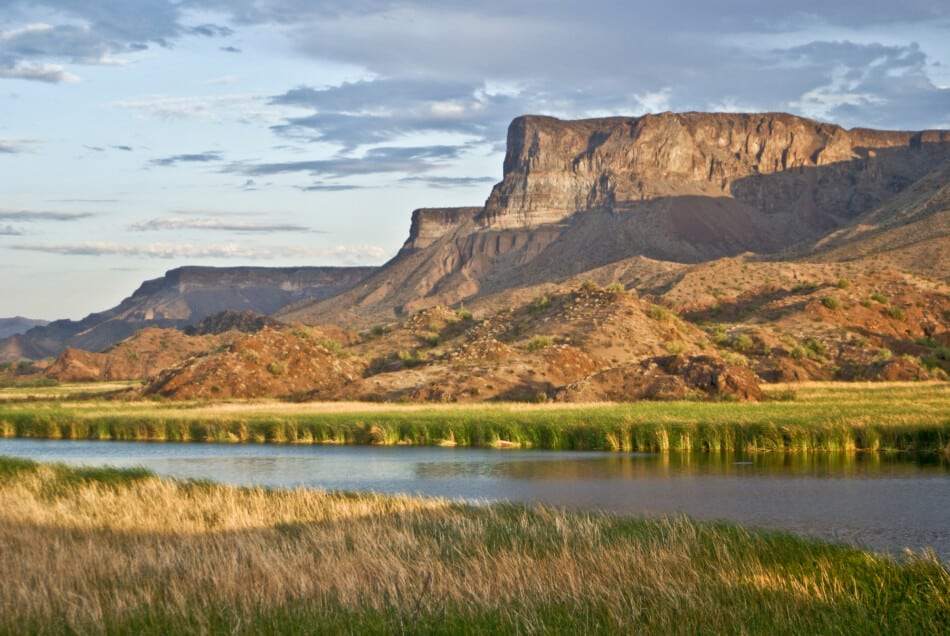
The charming city is known for its distinctive temperate Mediterranean climate, which contrasts sharply with the majority of the state’s desert regions. It is almost surrounded by the stunning Tonto National Forest.
Explore the city’s beautiful coldwater lakes, which are well-liked year-round destinations for hiking, horseback riding, and fishing, or take in the breathtaking Mogollon Rim natural formation, one of the most well-known natural wonders in the state.
The Tonto Natural Bridge, the largest natural bridge in the world, is one of the other natural attractions. There are also three championship golf courses where you can practice your swing, and the Mazatzal Casino has a bustling gaming floor and delectable places to eat.
The city has been the site of the oldest continuously held annual rodeo in the world since 1884.
Phoenix – 2 hours away
Phoenix, the beautiful capital of Arizona, is the biggest capital city in the United States, with a population of more than a million.

The city, which serves as the hub of the state’s stunning Valley of the Sun region, is renowned for its delightful cultural attractions. One such place is Heritage Square, a charming historic district that preserves many 19th-century structures and houses family-friendly attractions like the Arizona Science Center.
The Phoenix Art Museum houses famous works of art, and Roosevelt Row’s charming art galleries are also worth visiting. Golf courses by Jack Nicklaus are available for play, and upscale spa resorts offer relaxation and renewal.
Further, popular observation sites like Camelback Mountain are located close by in the Sonoran Desert.
Prescott – 1.25 hours away
Prescott is a quaint, historic community in central Arizona that is renowned for its downtown Whiskey Row neighborhood and gorgeous Victorian-style buildings.

More than 800 buildings in the city are included on the National Register of Historic Places, including Falcon Nest, the tallest house in North America, which is situated on the slopes of lovely Thumb Butte.
Whiskey Row, which was once known for its prostitute business in the early 20th century, is now home to a plethora of live music venues and bars.
The Sharlot Hall Museum recounts the region’s pioneer history, and the Smoki Museum showcases its indigenous culture. Within the boundaries of the city, four championship golf courses can be found, including the Antelope Hills Golf Course, which has two public courses.
The city hosts the World’s Largest Gingerbread Village, the Bluegrass Festival, and the eccentric New Year’s Eve Boot Drop event each year.
Route 66 – 1.25 hours away
The most famous transcontinental road in the country, Route 66, ran from Chicago, Illinois, to Santa Monica, California, throughout much of the 20th century.

Although many of the 401-mile route’s ancient roadside landmarks and highway signs still stand today and continue to draw hordes of motoring enthusiasts, most of the Mother Road has been covered or transformed into more contemporary highways.
You can explore roadside attractions close to Flagstaff, such as the renowned “Sleep in a Teepee” Wigwam Village Motel. The route of the road ascends the magnificent Kaibab plateau throughout its inner section, providing breathtaking vistas of the close-by Grand Canyon.
The route also passes by Meteor Crater, Cool Springs, Black Mountain, and Lake Havasu, among other wonders.
The San Francisco Peaks – 45 minutes away
The San Francisco Peaks are a stunning group of six volcanic peaks that surround the caldera of the long-dormant San Francisco Mountain volcano.

They are situated just north of Flagstaff. The highest mountain in Arizona, Humphreys Peak, which rises 12,633 feet above sea level, is one of the peaks.
The 12,356-foot Agassiz Peak and the 11,969-foot Fremont Peak are two further towering peaks. Within the stunning Coconino National Forest Day-use recreation area, the summits are surrounded by lava flows, volcanic rock, and deep Alpine Forest habitats.
The peaks, which also house the famous Arizona Snowbowl skiing resort, offer 30 miles of recreational hiking paths.
You can view the Grand Canyon’s North Rim from Humphreys Peak on clear days.
Scottsdale – 2 hours away
Scottsdale, a picturesque desert city in eastern Arizona, is recognized for its great malls and shopping centers, notably Scottsdale Fashion Square, which Travel & Leisure ranked among the top 25 most popular malls in the country.
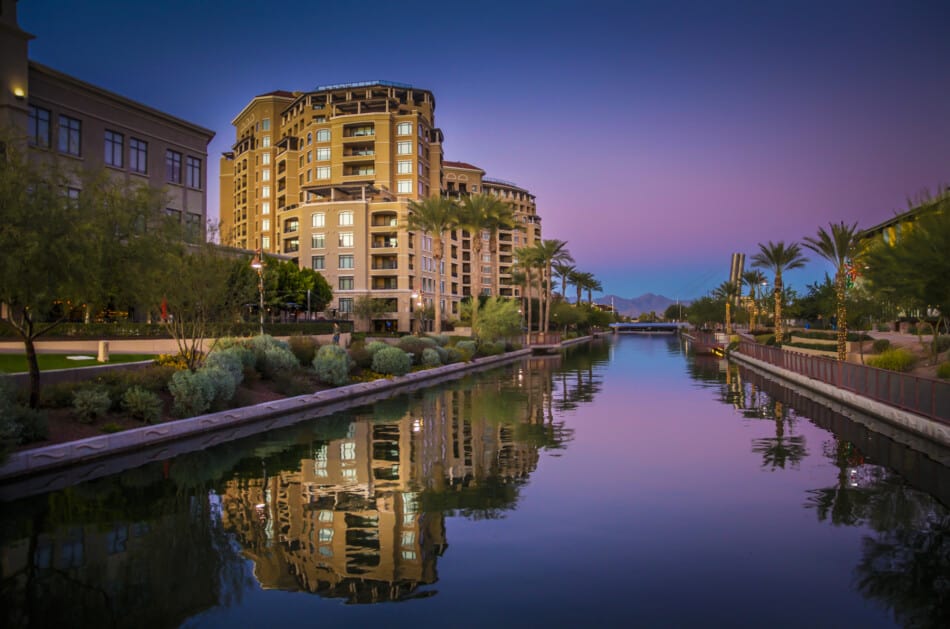
Beautiful buildings from the 1920s, 19th-century olive trees, and the gorgeous Scottsdale Arts District, which has numerous art galleries and studios, can all be found in the city’s charming Old Town area.
The city’s weekly Scottsdale Artwalk activities, held on Thursday evenings, feature the Scottsdale Museum of Contemporary Art and other artistic institutions.
You may also take a stroll through the McDowell Sonoran Preserve, known for its desert hills and rock formations, or explore historic sites like Taliesin West, the renowned winter residence of renowned architect Frank Lloyd Wright.
American Style Magazine has rated the city’s Scottsdale Arts Festival as the best arts festival in the country.
The Sonoran Desert – 2 hours away
A stunning desert covering more than 100,000 square miles that are found in parts of Arizona, California, and Baja California is called the Sonoran Desert.
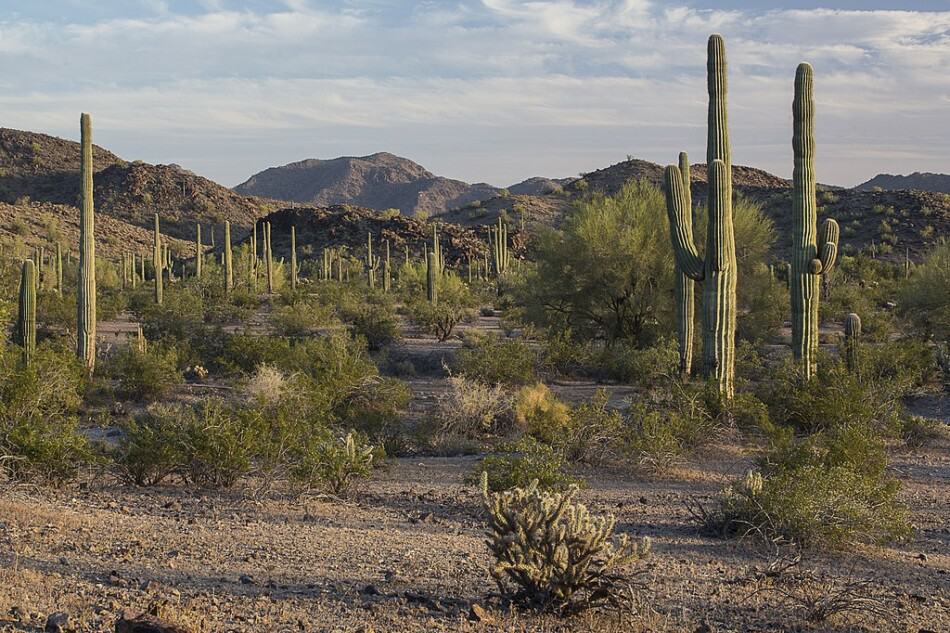
The desert, which is the warmest desert in North America, exhibits a high biological diversity of unique flora and wildlife, including lovely cacti and annual flowers from the West Coast like lupines and poppies. The Sonoran Desert National Monument was established in 2001 to preserve 775 square miles of the desert.
From Phoenix or Scottsdale, you may take half-day guided tours that include Jeep trips and hikes led by cowboys. The six-mile Brittlebush Trail, which crosses the North Maricopa Mountains Wilderness, is one of the hiking trails. The Arizona-Sonoran Desert Museum offers information on the native wildlife and habitats of the desert.
Antelope Canyon – 2.75 hours away in Page
Antelope Canyon is a beautiful slot canyon located on Navajo Nation Native American reservation land near the town of Page.

The cavern, which is close to the pristine Lake Powell, was first created after local Navajo sandstone was eroded by flash flooding.
Parts of the cave are open to the public as a tourist attraction, with guided tours offered all year by the Navajo Tribal Park. It is currently separated into the Upper and Lower Antelope Canyon parts, which are popularly known as “The Crack” and “The Corkscrew.”
The cave offers good opportunities for nature photography, especially at Upper Antelope Canyon, which is accessible from the ground up without any climbing.
Apache Trail – 5 minutes away
The Apache Trail preserves the name-bearing historic stagecoach road that crisscrossed Arizona’s Superstition Mountains for 40 miles and was named after the same-named native tribe.

The trail, which follows the same path as AZ 88 today, meanders past breathtaking natural attractions like Apache and Canyon Lakes as it meanders over rocky desert mountain terrain. Between Tortilla Flat and Roosevelt Dam, a stretch of it is unpaved and features dramatic rock drops, making for a dangerous but beautiful drive.
Those that travel the road will be rewarded with breathtaking views, such as those of Theodore Roosevelt Lake and the Tonto National Forest. The Globe and Goldfield towns, once copper mining centers, are home to places like Lost Dutchman State Park, which provides trailheads to the Superstition Wilderness.
B
Flagstaff – 45 minutes away
One of Arizona’s most scenic communities, Flagstaff, is surrounded by the stunning San Francisco Peaks. Humphreys Peak and Grand Canyon National Park are just two of the area’s natural treasures that may be explored from the city.
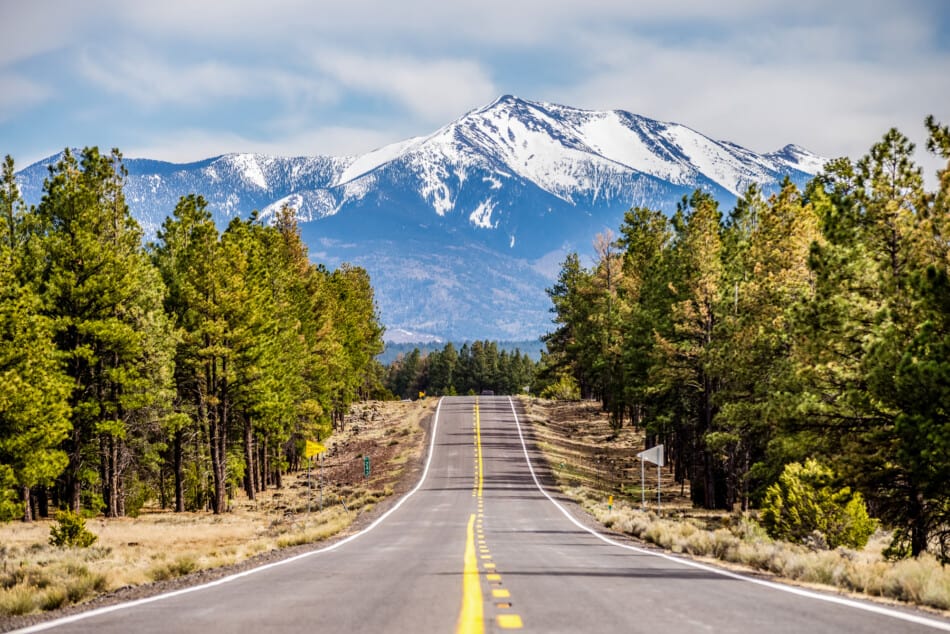
At an elevation of 9,200 feet above sea level, the well-known Arizona Snowbowl ski resort provides chances for skiing and other winter activities during the cooler months.
Concerts are held downtown all year long by the Flagstaff Symphony Orchestra, the Clifford E. White Theater, and the Studio Theater, among other excellent cultural institutions. The Flagstaff Music Festival, Pickin’ in the Pines Bluegrass Festival, Flagstaff Mountain Film Festival, and Northern Arizona Book Festival are all held annually in the city.
Wupatki National Monument and Walnut Canyon National Monument both feature local indigenous Pueblo sites.
Tombstone and Bisbee – 4.75 hours away
The two-story mining boomtowns, Bisbee and Tombstone, are about 90 minutes southeast of Tucson and are renowned for their contributions to the 19th-century creation of the Old West legend.

The famous O.K. The Corral is located in Tombstone. The famous 1881 shootout at the Corral between members of the Earp, McLaury, Clanton, and Claiborne families made it famous across the world.
Other attractions to see include the world’s tallest rose tree at the Rose Tree Museum as well as the historic Bird Cage Theatre, one of the Old West’s most famous theaters.
You can also take guided tours of the nearby Bisbee Queen Mine, which is in good condition or check out the exhibits at the Bisbee Mining and Historical Museum.
Walnut Canyon National Monument – 1 hour away
Approximately 10 minutes southeast of Flagstaff is the picturesque Walnut Canyon National Monument, which protects the stunning canyon of the same name and rises to a height of almost 6,700 feet above sea level.

At the monument’s visitor center, you can check out natural exhibits or you can walk around the canyon in a U-shape to see historic native habitations built by the Sinagua tribe in the area. A 185-foot loop route leads into the canyon, allowing you to explore its beautiful rim.
For those seeking to make an entire day out of exploring archaeological sites, Tuzigoot and Montezuma Castle National Monuments are close by and preserve more indigenous dwellings.
Despite the lack of campsites at the monument, you can set up a tent at the nearby national forest, which is only a 15-minute drive away.
Wupatki and Sunset National Crater National Monuments – 1.25 hours away
Just north of Flagstaff, there are two stunning national monuments: Wupatki and Sunset Crater. These monuments preserve a volcanic cinder cone and the ruins of a local indigenous village.
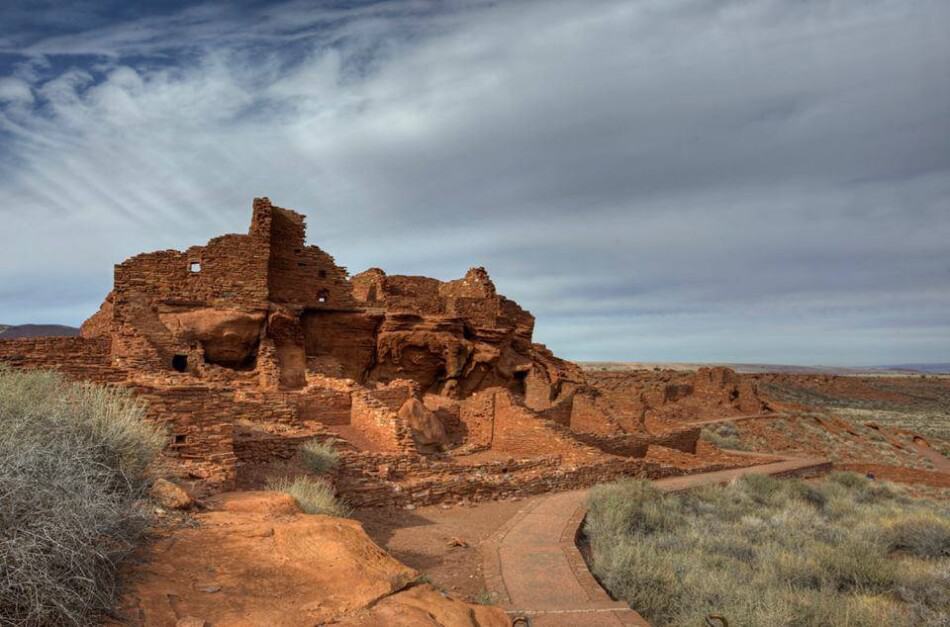
The original Sunset Crater, which features distinctive cinder and lava flow formations, was formed about 900 years ago from an eruption connected to the adjacent San Francisco Peaks.
As part of a guided or unguided hiking tour, you can explore the monument through a one-mile loop track at the crater’s base. More than 30 remnants of the indigenous Cohonina, Sinagua, and Kayenta Anasazi Ancient Pueblo communities can be seen at Wupatki National Monument.
One unique building is the Tall House, which has a large ancient ball court and more than 100 rooms.
Slide Rock State Park – 15 minutes away
The picturesque Slide Rock State Park in Arizona is named after the park’s on-site natural water slide and is only ten minutes north of Sedona in Oak Creek Canyon.

The United States Forest Service and the Arizona State Parks jointly operate the park, which is situated inside the Coconino National Forest. The Travel Channel has ranked the park as one of the top 10 swimming spots in the country.
Throughout the summer, the public is welcome to swim, slide, and wade at Oak Creek. The slide is 80 feet long. Since 1912, a 43-acre working apple farm has been running close to the slide.
Grand Canyon National Park – 2 hours away
One of the most stunning natural wonders in the world is preserved by Grand Canyon National Park. It is one of the Seven Wonders of the Natural World and is protected as a UNESCO World Heritage Site.
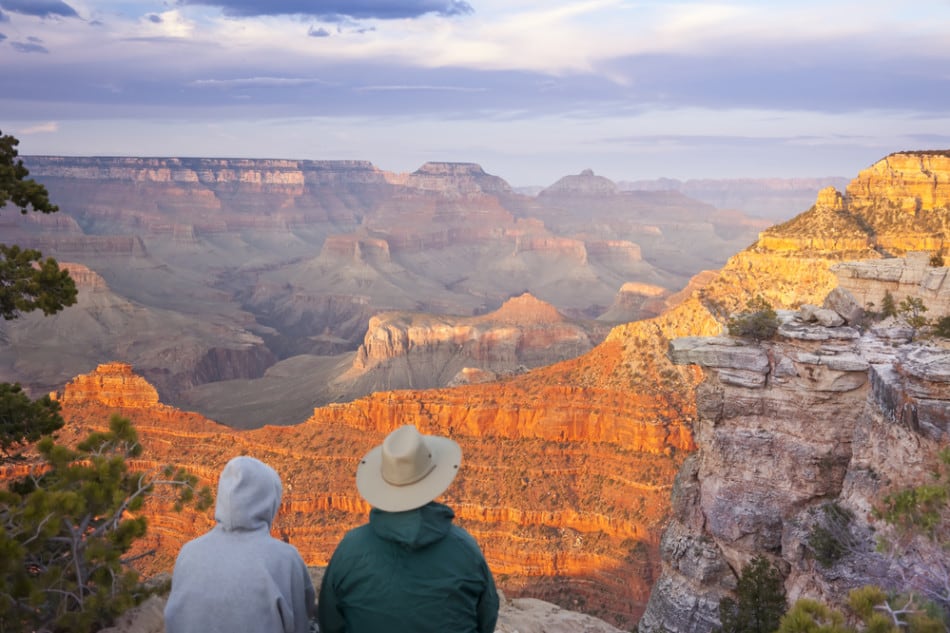
The park, which covers 1.2 million acres and is one of the most visited national parks in the country, was founded in 1919 as the 15th national park facility in the United States. The Colorado River’s flow has sculpted beautiful rock layers produced in the Precambrian era, exposing spectacular red, brown, and pink layers that offer unrivaled photo opportunities today.
Accommodations along the South Rim of the park, which is home to family-friendly tourist destinations like the Grand Canyon IMAX Theatre and the Yavapai Geology Museum, will provide you the chance to stay in luxury. Luxury lodges and campgrounds on the North Rim of the Canyon provide easy access to scenic overlooks like Mather Point and the Yavapai Observation Station.
First Mesa – 2.5 hours away
On the borders of the Hopi Reservation, First Mesa is a unique attraction that displays the traditional way of life of the Hopi indigenous tribe’s settlements.
The site unites three historic Hopi and Tewa communities at Walpi, Sitsmovi, and Hano. It is perched high above a lovely mesa that offers breathtaking views of the surrounding Arizona landscape.
You can travel through time more than a thousand years and discover the traditional methods of living in the communities, acquiring a fresh appreciation for the customs and cultural practices of indigenous Americans.
The Walpi village, which is included as part of escorted walking tours offered by the First Mesa Consolidated Village Office, continues to operate without power or running water. The Hopi Cultural Center, located on the Second Mesa, offers a stunning gallery where you can buy one-of-a-kind pieces of native artwork, such as polychrome ceramics and carved katsina dolls.
Jerome – 20 minutes away
The largest copper mine in Arizona during the 19th century was located in Jerome, a bustling artistic center in central Arizona. At its busiest, the mine produced over three million pounds of copper each month.
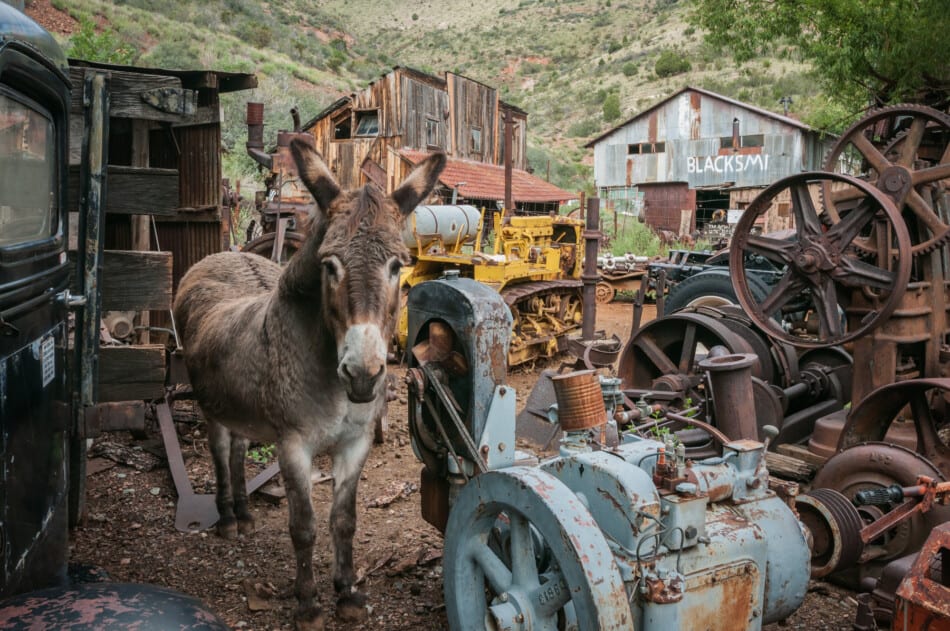
You can visit historic sites like Jerome State Historic Park, where the magnificent 1916 Douglas Mansion is located and is currently used as a living history museum. Audrey Headframe Park displays a 1918 mining shaft that is protected by a glass viewing platform.
Check out my post on Things to do in Jerome
The city’s downtown area has just undergone a total revitalization and is now home to lovely art galleries, antique stores, boutiques, and scrumptious dining establishments inside derelict historic buildings. Also, an ancient pueblo situated on a mountaintop is also preserved close by at Tuzigoot National Monument.
Kartchner Caverns – 4.5 hours away
Gary Tenen and Randy Tufts first came upon the stunning limestone caves known as Kartchner Caverns in 1974. Check out my post on cool Caves in Arizona.
These caverns are famous for their 2.4 miles of breathtaking subterranean tunnels. Since 1998, the caves have been operated as tourist destinations and are available for public tours with guides.
You can see beautiful locations like the Kubla Khan column and the Throne Room of the caves, which are home to some of the world’s longest soda straw stalactite formations. The Mud Flats, Cul-de-Sac Passage, Strawberry, and Rotunda Rooms, as well as other significant aspects of the caves, can also be explored as part of guided tours.
The caverns are a vital location for Myotis velifer bats, an endangered species, to lay their eggs throughout the summer. You can also trek beautiful nature paths above ground at Kartchner Caverns State Park, including the 4.2-mile Guindani Trail.
ear Wallow Wilderness – 5 minutes away
Some of the largest virgin ponderosa pine forest tracts in the American Southwest can be found in Bear Wallow Wilderness, along with sizable tracts of fir, spruce, aspen, and conifer forest.
The National Wilderness Preservation System—a significant initiative to provide pristine habitats for rare and endangered flora and animals across America—operates the wilderness area.
All through the year, visitors can take advantage of fantastic chances for hiking, kayaking, canoeing, rock climbing, river rafting, and backpacking at places like the stunning Bear Wallow Creek, which is surrounded by lovely green riparian hardwoods.
Along with herds of deer, elk, and local reptiles, the wilderness is home to an outstanding population of black bears. The Reno Trail, which offers access to the creek’s canyon, is one of five visitor trails that meander through the wilderness.
Canyon Lake – 3 hours away
One of the four reservoirs built along the Salt River in Arizona, Canyon Lake, was first built in 1925 alongside the Mormon Flat Dam.
The 950-acre Ace, the smallest Salt River Lake, is a well-liked rest point at Apache Junction along the picturesque Apache Trail. With year-round opportunities for hiking, boating, scuba diving, and water activities like jet skiing, it serves as a popular outdoor recreation destination for the Phoenix and Sedona communities.
Anglers have excellent chances to catch fish like walleye, bluegill, yellow bass, rainbow trout, and channel catfish. The recreation facility provides two boat launches, a designated swimming area, and several day-use picnic areas. Both the Canyon Lake Marina Campground and Tortilla Flat Campground provide locations for overnight stays and marina facilities.
McDowell Mountain Regional Park
Known as a top location for seasonal outdoor recreational activities in the Sedona area, McDowell Mountain Regional Park is a gorgeous 21,000-acre public park in northern Fountain Hills, Arizona.
The park, which is situated along the western end of the McDowell Mountain range, is home to an amazing network of more than 50 multi-use hiking, mountain biking, and horseback riding trails. It is situated at an altitude of 3,000 feet above sea level.
Three mountain biking loop tracks with varying degrees of difficulty are available for competitive mountain cyclists. The park is a well-known destination for wildlife viewing since it is the natural habitat of animals including coyotes, deer, and javelina. Its tent and RV Hookup campsites allow visitors to spend the night, and they come with picnic tables, bathrooms, showers, and campfire facilities.
Recent Posts
Discover the Top 19 Unforgettable Day Trips Just Hours from Vegas! Are you looking for day trips from Vegas? Whether you are looking to get away from the strip or are using Vegas as a base...
Vegas Fine Dining: A Tour of 15 Exquisite Upscale Dining Destinations Welcome to the ultimate guide to upscale dining in Las Vegas! Whether you're a seasoned foodie or simply seeking a taste of...
